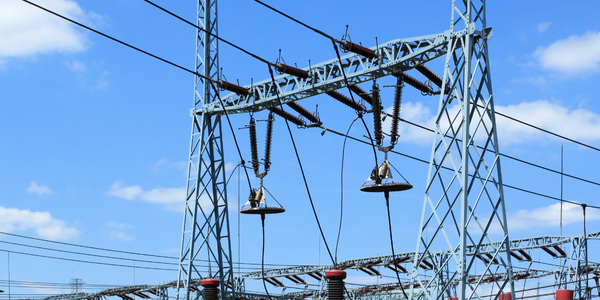Sizing Up Voyager’s 5G Network: NVIDIA's Time and Cost Savings with Altair 5G Wireless Network Solution

Technology Category
- Networks & Connectivity - 5G
- Networks & Connectivity - RFID
Applicable Industries
- Electrical Grids
- Telecommunications
Applicable Functions
- Product Research & Development
- Quality Assurance
Use Cases
- Building Automation & Control
- Experimentation Automation
Services
- System Integration
- Testing & Certification
About The Customer
NVIDIA, founded in 1993, has been a pioneer in accelerated computing. The company’s invention of the GPU in 1999 sparked the growth of the PC gaming market, redefined computer graphics, and ignited the era of modern artificial intelligence (AI). NVIDIA is now a full-stack computing company with data-center-scale offerings that are reshaping the industry. NVIDIA built a massive 750,000 sq. ft. building named Voyager, which is a reference to both Star Trek’s Voyager and the “v” in NVIDIA. The base camp reception area sits at the foot of a mountain and features numerous tiers interspersed with people, offices, and garden spaces.
The Challenge
NVIDIA, a pioneer in accelerated computing, built a massive 750,000 sq. ft. building named Voyager. To accompany the architectural innovation, NVIDIA wanted an equally impressive, private 5G network to support multi-access edge computing (MEC) applications and leverage the unlicensed Citizens Broadband Radio Service (CBRS) band. The first MEC application required intelligent video analytics with 5G cameras in the lobby area. A network development challenge was the 150 MHz limit within the CBRS spectrum. To handle this, NVIDIA decided to use 100 MHz minimum bandwidth to maintain the desired throughput levels and use the same frequency carrier for all radio units. This made the 5G network’s needed throughput challenging. NVIDIA also wanted to compare two different vendor radio units, one with directional transmission and one with omni-directional transmission, each with 4 downlink (DL) multiple-input multiple-output (MIMO) layers and 2 uplink (UL) MIMO layers.
The Solution
NVIDIA wanted to maximize throughput for the desired in-building coverage area. However, traditional testing and physical deployment to determine the best radio-unit locations and antenna orientation were costly and time-consuming. Instead, NVIDIA deployed Altair’s simulation-driven, network planning and optimization solution. Altair developed a Voyager surrogate model including all aspects that affected the building’s wireless propagation. In an integrated system workflow, the team used Altair® HyperWorks® for geometry cleanup; Altair® Feko® with Altair® WinProp™ modules for material assignment, wireless propagation, and network analysis; and Altair® HyperStudy® for optimizing the number and positions of radio units. Altair’s initial analysis identified the best radio unit locations and orientations using WinProp’s dominant path model, a fast, accurate prediction model for wireless coverage analysis. With the radio units optimally positioned, Altair performed the final analysis with WinProp’s full-3D-ray-tracing models.
Operational Impact
Quantitative Benefit

Case Study missing?
Start adding your own!
Register with your work email and create a new case study profile for your business.
Related Case Studies.

Case Study
Hydro One Leads the Way In Smart Meter Development
In 2010, Ontario’s energy board mandated that time-of-use (TOU) pricing for consumers be available for all consumers on a regulated price plan. To meet this requirement, Hydro One needed to quickly deploy a smart meter and intelligent communications network solution to meet the provincial government’s requirement at a low cost. The network needed to cover Hydro One’s expansive service territory, which has a land mass twice the size of Texas, and its customers live in a mix of urban, rural, and remote areas, some places only accessible by air, rail, boat or snowmobile. Most importantly, the network needed to enable future enterprise-wide business efficiencies, modernization of distribution infrastructure and enhanced customer service. To meet these needs, Hydro One conceptualized an end-to-end solution leveraging open standards and Internet Protocols (IP) at all communication levels. The utility drew upon industry leaders like Trilliant to realize this vision.

Case Study
Selling more with Whirlpool
Whirlpool wanted to add connectivity to appliances and transform the company's relationship with customers. Traditionally, Whirlpool interaction with customers was limited to purchases made once every ten years. Connected washer and dryers provide exciting new features like remote management of start times and inter-machine communication.

Case Study
SAS® Analytics for IoT: Smart Grid
Companies face falling revenues, rising infrastructure costs, and increasing risk of outages caused by inconsistent energy production from renewable sources. Less money is coming in as more people and organizations take steps to curb their energy use. Utilities are paying more to maintain and build infrastructure due to increasing complexity, resulting from the rising number of intermittent and variable renewable energy sources connected in the distribution grid.

Case Study
Enel Secures Italian Power Generation Network
Electric energy operators around the world are working to increase the reliability and cyber resiliency of their systems. This includes Enel, a global power company that manages and monitors the Italian power grid. This grid:• Serves 31 million customers• Has a net installed energy capacity exceeding 31 gigawatts• Includes more than 500 power generation plants,including hydroelectric, thermoelectric, and wind• Is managed and monitored by Enel 24/7/365• Is operated by Terna, the Italian Transmission System Operator (TSO)Enel is responsible for the availability of the grid’s underlying ICS and industrial network. It also manages Regional Control Centers and Interconnection Centers which connect with the TSO. The TSO manages the flow of energy to the grid plus controls and remotely regulates the power generation of power plants, increasing and decreasing power production as required. The complex system of interaction and cooperation between Enel and the TSO has strong security implications as well as operational and business challenges.

Case Study
Vodafone Hosted On AWS
Vodafone found that traffic for the applications peak during the four-month period when the international cricket season is at its height in Australia. During the 2011/2012 cricket season, 700,000 consumers downloaded the Cricket Live Australia application. Vodafone needed to be able to meet customer demand, but didn’t want to invest in additional resources that would be underutilized during cricket’s off-season.



